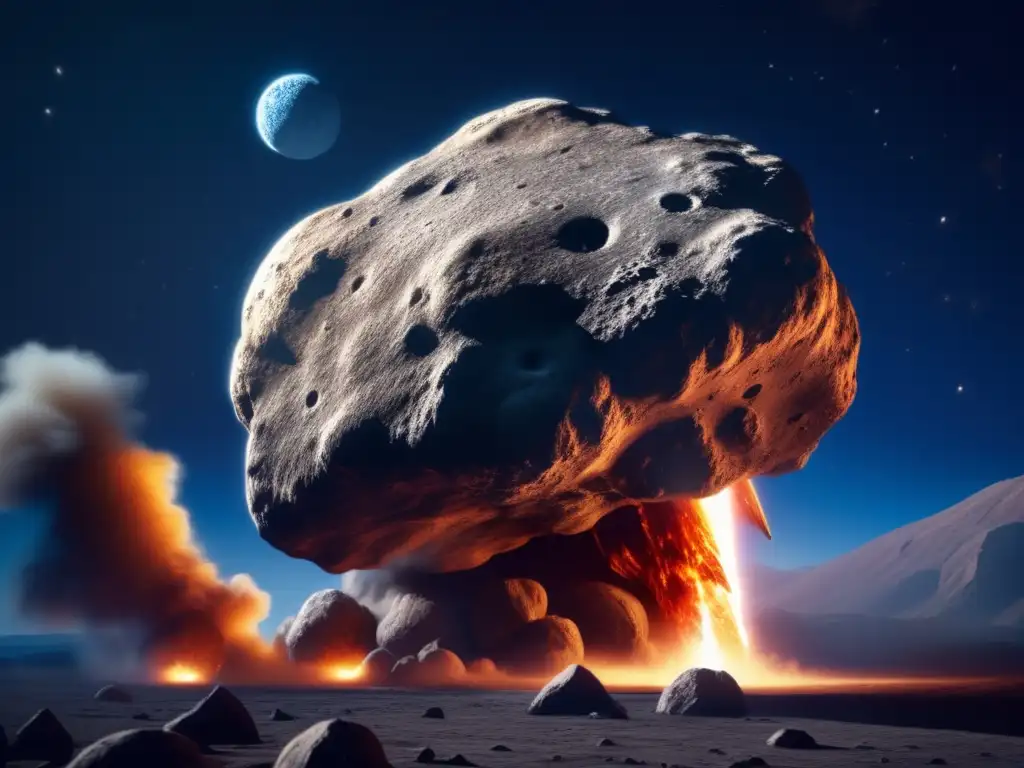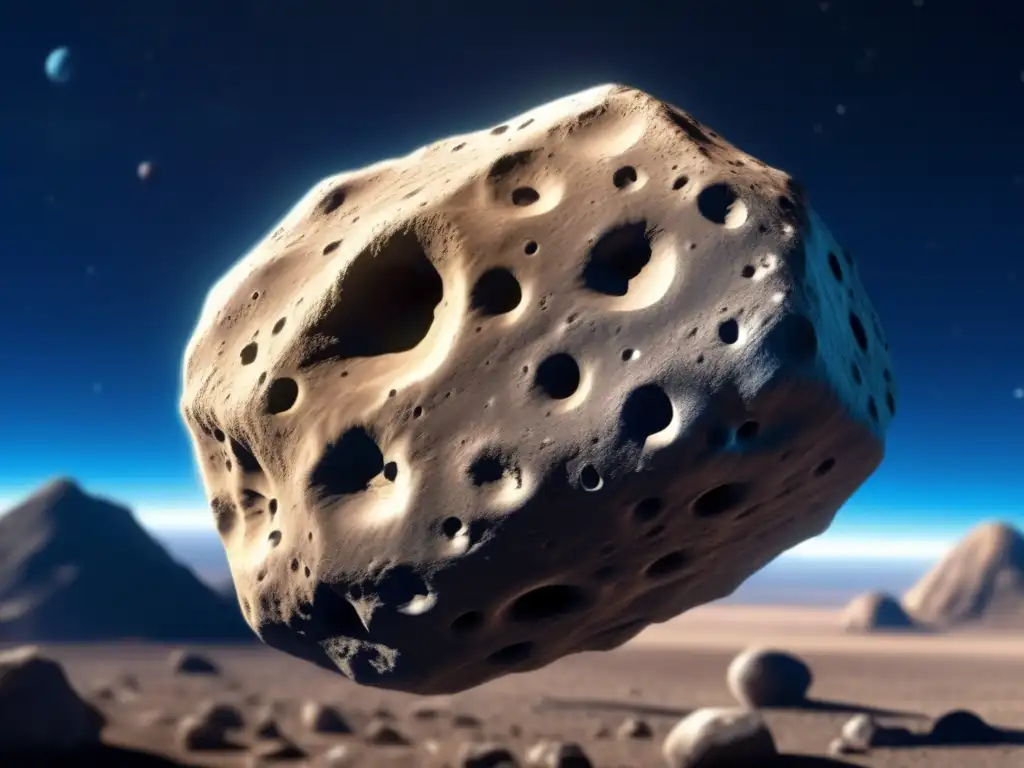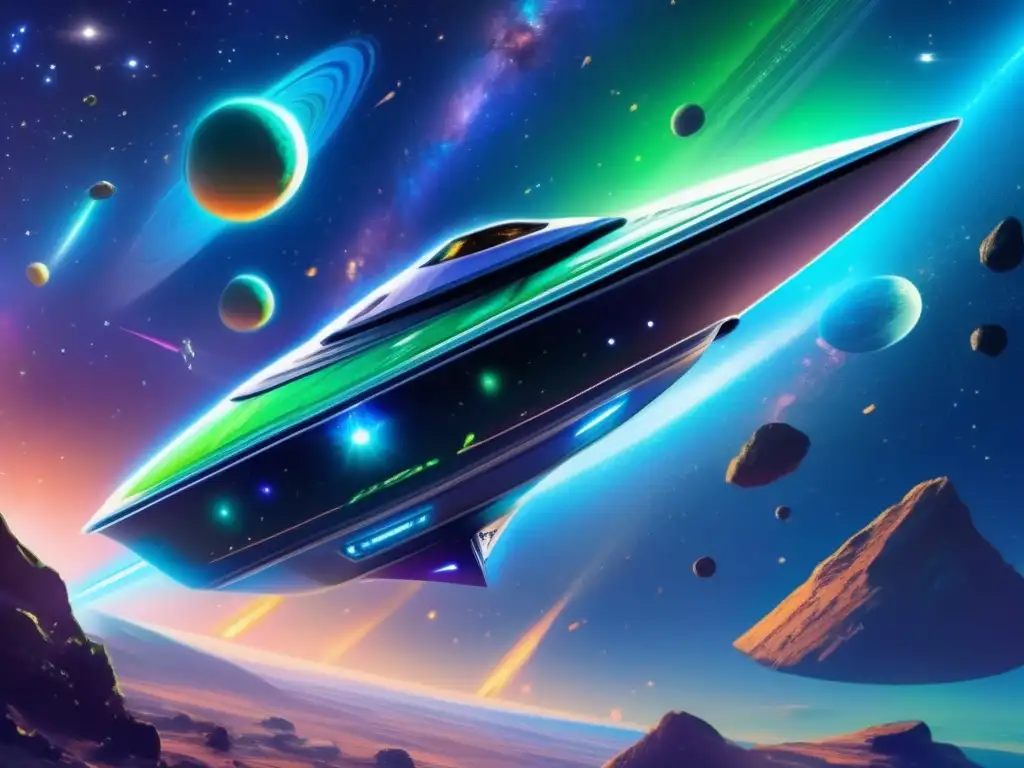The Sky's Message: Asteroids In Native Hawaiian Mythology

Introduction
Asteroids have fascinated humans for centuries and have been studied extensively by astronomers, physicists, and other experts. However, the significance of these celestial objects goes far beyond their scientific aspects. Asteroids have played vital roles in various mythologies worldwide and continue to hold an important place in many cultures. In this article, we explore the role asteroids play in the mythology of the Hawaiian people.
The Beginning of Creation

The Kumulipo Creation Story
The Kumulipo is the Hawaiian creation story that outlines the birth of the universe and the origin of life on Earth. It describes the process of creation through a genealogy of gods, goddesses, and other creatures. According to the Kumulipo, the asteroid belt between Mars and Jupiter represents the birthplace of the most ancient god, Kumulipo, who gave life to the universe.
The Role of Kalaipahoa
Kalaipahoa is a Hawaiian god who controls the asteroids. He is known as the god of the sky and is responsible for sending messages from the heavens to the Earth. According to Hawaiian mythology, Kalaipahoa throws fiery stones down to the Earth to warn the people of impending danger or to communicate an important message from the gods.
The Power of Puulena
Puulena is a Hawaiian goddess associated with the asteroid Kaawakea, which is believed to have fallen to the Earth in the form of a stone. According to legend, Puulena possessed immense power and could control the movements of the stars and planets. She is revered by the Hawaiian people as a powerful deity who brings good fortune and protection.
The Significance of Asteroids in Hawaiian Culture

Ancient Hawaiians, like many seafaring cultures, used the stars to navigate the oceans. The positions and movements of asteroids were particularly important as they could indicate one's location and help navigate through open waters. Hawaiians also used the phases of the moon, the rising and setting of stars, and the direction of ocean currents in their navigation techniques.
Astrology and Astronomy
Astrology and astronomy have played significant roles in Hawaiian culture for centuries. Hawaiians believe that the position of celestial objects at the time of one's birth can influence their personality and destiny. They also associate each island with a different star or planet and consider certain astronomical events, such as eclipses, comets, or meteor showers, as important omens and signs from the gods.
Ceremonial Practices
Hawaiians have long used ceremonial practices to honor the gods and seek blessings. Ceremonies often included offerings of food, chants, and prayers. The appearance of an asteroid was considered a powerful and auspicious event, and Hawaiians would often hold elaborate ceremonies to celebrate it.
Frequently Asked Questions

-
Did Hawaiians have a specific name for asteroids?
Yes. Hawaiians called asteroids "kui poepoe," which translates to "darting stars."
-
How did ancient Hawaiians navigate using asteroids?
Ancient Hawaiians used asteroids to determine their position in the ocean by studying their movements and positions in the sky.
-
Are there any existing Hawaiian ceremonies that involve asteroids?
While many of the traditional ceremonies have evolved or been lost over time, certain events still incorporate elements of Hawaiian mythology related to asteroids.
-
What is the significance of Kaawakea, the asteroid associated with Puulena?
Kaawakea is believed to have fallen to Earth in the form of a stone and is associated with the goddess Puulena, who has immense power and brings good fortune and protection.
-
Was Kalaipahoa the only god associated with asteroids in Hawaiian mythology?
No. While Kalaipahoa was the most prominent god associated with asteroids, others, such as Kaumaielieli, also had roles in controlling the movements of celestial objects.
Conclusion
Asteroids have long been an important part of Hawaiian mythology and culture. The Hawaiian people associate these celestial objects with creation, navigation, astrology, and ceremonial practices. While many of these traditions have evolved over time, the significance of asteroids remains an essential part of the Hawaiian identity. By understanding the role of asteroids in the mythology of the Hawaiian people, we can develop a deeper appreciation for the cultural richness of this unique island nation.
We encourage our readers to share their thoughts and experiences related to asteroids in the comments section below. Additionally, make sure to subscribe to www.asteroidrealm.com for more exciting articles on all things asteroids!
Additional Resources

For further reading on Hawaiian mythology and culture related to asteroids, we recommend the following resources:
- Hawaii Magazine: Kalaipahoa: The God of Hawaiian Skies
- To-Hawaii: Hawaiian Mythology
- Kona Historical Society: Ancient Hawaiian Navigation
 Exploring Asteroids In Maori Mythology
Exploring Asteroids In Maori Mythology Prophecies Of The Sky: Asteroids In Jewish Folklore
Prophecies Of The Sky: Asteroids In Jewish Folklore The Asteroid In Aztec Prophecy: A Deep Dive
The Asteroid In Aztec Prophecy: A Deep DiveIf you want to discover more articles similar to The Sky's Message: Asteroids In Native Hawaiian Mythology, you can visit the Asteroid Mythology category.
Leave a Reply

Articulos relacionados: